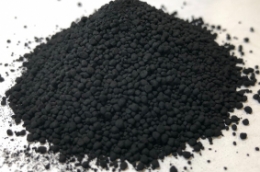The right materials to provide innovative energy solutions
Blog written by Bjorn de Koeijer of EPEA
Innovation takes place in many sectors. But perhaps the energy sector is one of the most innovative in recent years. Let’s have a look at three specific energy or actually material-related developments. Developments which could be considered ‘sustainable’, from a certain point-of-view. But in what way could these kinds of developments be suitable from a Cradle to Cradle approach?
Let’s start with wind energy. In recent years, The Netherlands has been investing in several wind farms. Either on land, or for example in the North Sea. One of the most important goals to be achieved is the European 20-20-20 package[1]. This mainly focuses on the reduction of greenhouse gas emissions and a raised share of consumed renewable energy, combined with improvements of the EU’s energy efficiency. In The Netherlands, one of the current developments towards these goals is the refurbishment of several ‘out-of-date’ wind farms. From an efficiency point of view, it is great that a few smaller wind turbines are replaced with one newer, larger model with a higher energy output as bottom-line result.
With developments like this, we have the efficiency box checked. We can proudly claim that our wind farms are developing towards national and European goals for the near future. But what we never hear or read about is the end-of-use of wind turbines. Let’s take the rotor blades as an example. These will probably be constructed out of fiberglass- or carbon fibre-reinforced plastic or a wood-epoxy blend[2]. In any case, not materials which are designed for safe disassembly with optimal material reutilization from a Cradle to Cradle point of view. The materials are very well suited for their use, but have never been designed to be beneficial in a technical cycle. A very likely scenario for the wind turbine is to be burned after its intended use possibilities. This still adds up to a cradle to grave approach. Efficiency goals are great, but do they weigh up to the design quality flaws we bury ourselves in?
Another example: electric mobility. Or more specific: electric cars. Obviously, burning up fossil fuels to transport people and goods is a strange approach. Over a century ago, this might have sounded logical, since we regarded fossil fuels as a virtually abundant source of energy. However, our technological developments have brought us great innovations, which open up a great efficient world. After all, batteries in (for example) your average plug-in hybrid car are still powered by electricity from the grid. So instead of gasoline, most of the times we burn up e.g. coal or discarded materials to be mobile. Many car makers have been working on the quest to find the ideal car battery. And by ideal, they mean the highest energy density, combined with short charging times. Lithium-ion developments seem to answer to these requirements. But in what way are li-ion batteries really beneficial? Mining of essential elements in these batteries (for example lithium, copper and aluminium) is no depletion by definition but to achieve high quality in a technical cycle, these materials need to be suited for proper reutilization. This means design and high-quality recycling, in which we maintain (or even improve) material value. Is this a requirement for the ideal car battery? Or are we losing our precious materials in order to be more energy-efficient?
A third example relates to a recent development by a student from the Royal College of Art, Julian Melchiorri, who developed a biobased man-made leaf which turns light and CO2 in oxygen[3]. Exactly the magic process its natural counterpart is capable of. The leaf consists of chloroplasts taken from plant cells suspended in a body made of silk protein from silk fibres, materials that could fit in a biological cycle. It is an invention that speaks to our imagination. Think of the endless amazing opportunities: buildings can be covered with these leaves, offices can be painted with ‘breathing’ paint. Cities can provide us with oxygen, in abundance. From a Cradle to Cradle perspective the materials chosen for these inventions are extremely important. An unfortunate chosen glue, varnish or paint could make this leaf emit harmful substances. The California Institute of Technology (Caltech) is producing their own artificial leaf that will be able to do photosynthesis[4]. Calthech is focusing on the production of hydrogen fuel by the leaf and faces challenges in deciding on the right combination of elements to use such as silicon, nickel, iron, cobalt, cerium, iridium. With the choice of these materials one could expect a different use and end of use scenario comparing Julian Melchiorri’s leaf and Caltech’s leaf. In both cases production, use, end of use and reverse logistics are important to consider when choosing the right materials.
These examples are but minor issues related to the current approach of eco-efficient energy. If we would take it even broader, it could be truly beneficial. Think about this: energy companies need to convince users to allow wind farms nearby. They need to persuade them with return on investments in these farms, to make up for the ‘spoiled horizon’ and constant sounds wind turbines make. Why can’t wind farms be extra beneficial during use, instead of being regarded an annoying liability?
Imagine wind farms which provide us with renewable energy in abundance, while acting like a materials pool for high-quality materials and accommodating flourishing ecosystems. And all that while being aesthetically appealing in our landscape. Imagine mobility which is not regarded as something with a destructive impact, but essential and fun: the more you use it, the more beneficial it becomes. Imagine cities which are not making us sick, but providing us with improved in- and outdoor air quality and fresh oxygen.

 正體中文
正體中文




